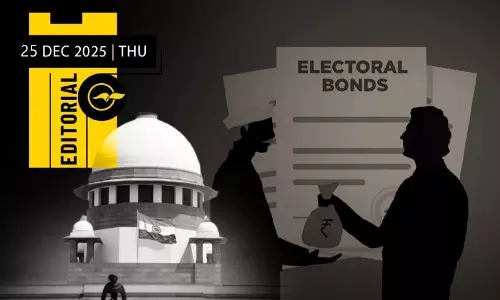
Isro's Nisar mission faces delay as key component sent back to Nasa
text_fieldsBengaluru: The highly anticipated NISAR (NASA ISRO Synthetic Aperture Radar) mission, a significant collaboration between NASA and the Indian Space Research Organisation (ISRO), has encountered a slight setback, leading to a delay in its launch readiness date.
It is now anticipated to be determined by the end of April.
The Earth-observing satellite, slated for launch from the Satish Dhawan Space Centre on India’s southeastern coast, is currently undergoing final preparations.
A crucial aspect of the mission's preparation involves applying a special coating to the satellite’s 39-foot-diameter (12-meter) radar antenna reflector. This component, a major contribution from NASA, requires the coating as a precautionary measure against potential temperature fluctuations that could affect its performance in space.
Recent tests conducted by Isro have revealed potential issues with the reflector facing higher-than-expected temperatures when stowed during flight, necessitating this additional precaution.
The Nisar mission seeks to redefine our understanding of Earth’s surface dynamics by utilizing microwave signals to survey nearly all land and ice surfaces worldwide every 12 days. This frequent, high-resolution monitoring is anticipated to yield invaluable insights into phenomena such as ice sheet movements, forest dynamics, and natural hazards like earthquakes and volcanic eruptions.
The specialized coating, aimed at reflecting solar radiation to mitigate temperature variations, is presently being applied at a dedicated facility in California. This process involves transporting the reflector from Isro's assembly site in India, underscoring the international collaboration pivotal to the mission.
Following verification of the coating's thermal performance, the reflector will be returned to India for integration onto the satellite, marking a crucial step before launch.
Nisar represents the inaugural hardware collaboration between NASA and Isro for an Earth-observing mission.
By leveraging L-band and S-band synthetic aperture radars, Nisar promises unprecedented insights into Earth’s dynamic surfaces, facilitating tracking of glacier changes, monitoring of wetlands and forests, and observation of terrain surrounding significant geological features.























